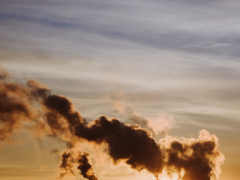Countries should up climate action to cut a further 25% from predicted 2030 emissions
The world should increase its ambition to cut roughly a further quarter off predicted 2030 global greenhouse emissions and have any chance of minimizing dangerous climate change, UN Environment said today as it released its annual Emissions Gap report. Researchers of PBL Netherlands Environmental Assessment Agency were among the leading authors of this study.
Made public the day before the Paris Agreement comes into force, the report finds that 2030 emissions are expected to reach 54 to 56 gigatonnes of carbon dioxide equivalent – far above the level of 42 needed to have a chance of limiting global warming to 2oC this century. One gigatonne is roughly equivalent to the emissions generated by transport in the European Union (including aviation) over a year.
Scientists agree that limiting global warming to under 2oC this century (compared to pre-industrial levels), will reduce the likelihood of more-intense storms, longer droughts, sea-level rise and other severe climate impacts. Even hitting the lower target of 1.5 oC will only reduce, rather than eliminate, impacts.
World still heading for temperature rise of 2.9 to 3.4oC this century, even with Paris pledges
The predicted 2030 emissions will, even if the Paris pledges are fully implemented, place the world on track for a temperature rise of 2.9 to 3.4 degrees this century. Waiting to increase ambition would likely lose the chance to meet the 1.5 oC target, increase carbon-intensive technology lock-in and raise the cost of a global transition to low emissions.
2015 hottest year on record
The need for urgent action has been reinforced by the fact that 2015 was the hottest year since modern record keeping began. The trend is continuing, with the first six months of 2016 all being the warmest ever recorded. Yet emissions continue to increase, the report says.
The Kigali Amendment to the UN Environment-hosted Montreal Protocol, agreed last month, aims to slash the use of hydrofluorocarbons (HFCs). Early studies indicate this could cut another 0.5 degrees if fully implemented, although emissions won’t begin to be reduced at any significant rate until 2025.
Accelerate cost-effective energy efficiency and stimulate action by cities, companies and civil society
Also, while members of the G20 are collectively on track to meet their Cancun climate pledges for 2020, these pledges fall short of creating a sufficiently ambitious starting point to align with the temperature target of the Paris Agreement. However, the Gap report presents an assessment of the technologies and opportunities to find the further cuts required, including through non-state actors, energy efficiency acceleration and crossover with the sustainable development goals. Non-state actors (the private sector, cities, regions and other subnational actors like citizen groups) can cut several gigatonnes off the gap by 2030 in areas such as agriculture and transport, provided the many initiatives meet their goals and do not replace other action.
Energy efficiency is another area where investment could bring bigger gains. Investments in energy efficiency increased by 6 per cent to US$221 billion in 2015, indicating that action is already happening.
Studies show that for an investment of between 20 and 100 US$ per tonne of carbon dioxide, energy efficiency emissions reduction potentials (in gigatonnes) by 2030 are 5.9 for buildings, 4.1 for industry and 2.1 for transport.
Finally, climate action is intertwined with the sustainable development goals. The earliest impacts of climate change may undermine our ability to deliver the goals by 2030, and failure to deliver on the climate action goal will have even larger implications for maintaining development progress post-2030.
Successful implementation of the Paris Agreement and the sustainable development goals agenda will depend on the ability of governments to develop national targets that serve both and take advantage of common opportunities.




